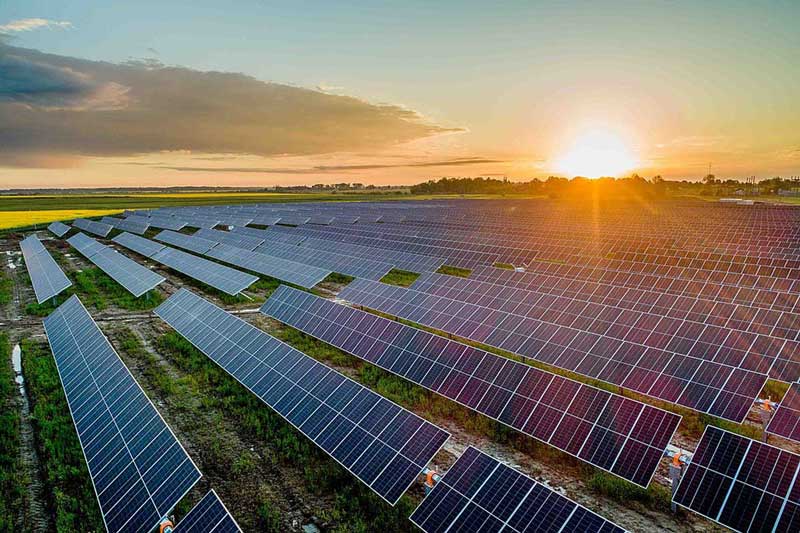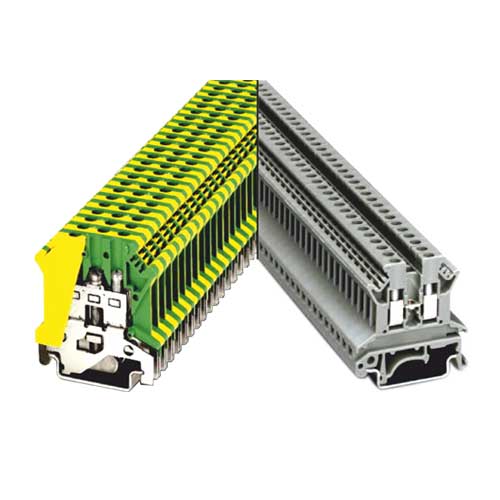Schedule a Call Back
Solar market in a bright spot
 Industry News
Industry News- Nov 03,22

As part of its plan to achieve COP 21 climate change goals, India has set ambitious targets to achieve 175 GW and 500 GW renewable energy installations by 2022 and 2030, respectively. As a result, the renewable energy industry has gained momentum in the recent years.
"Given the favourable geographical conditions, abundance of natural resources and the right policies, India has the potential to lead the renewable energy sector globally. India has so far installed 66 per cent of its total renewable energy installation of 175 GW. Solar structures represented 89 per cent of all clean energy capacity installations this year. Wind installations only rose by 7 per cent compared to last year and comprised 10 per cent of all new renewable energy (RE) installations so far this year," says Vineet Mittal, Chairman, Avaada Group, which aims to install 3 GW of renewable energy capacity by 2030. The group has already commissioned 2 GW in the past 15 months and aims to make India the global hub for renewable energy with the plan to set up a 5GW cell-to-module factory which will be commissioned fully by 2024.
Proactive policy supports, vibrant private investing environment and rapid technological progress have helped India to take long stride on the path of renewable energy. The total renewable energy capacity in India stood at 159.95 GW as of May 2022, reporting an increase of about 109.4 per cent compared to 2014.
As per the CII-Mercom report, titled ‘Pathways for Global Partnership in Green Energy: Powering India and the World’, renewable energy sources accounted for about 90.4 per cent of new power capacity additions in the first half of 2022, with the share of solar energy standing at a whopping 77.9 per cent. According to the Central Electricity Authority (CEA), by 2029-30, the share of renewable energy generation is estimated to increase from 18 per cent to 44 per cent, while thermal power could reduce from 78 per cent to 52 per cent.
Solar: Shining bright
Factors like low-entry cost, government incentives, availability of technology and vast domestic market have propelled the growth of solar energy segment. India’s 500 GW milestone in renewable energy by 2030 will remain a distant dream, if solar fails to tap its full potential. “India’s roadmap to achieve a 500 GW target of renewable energy by 2030, will only be possible with solar that will contribute about 60 percent to its total capacity. Every new industry has teething issues which will be resolved over due course of time with the intervention of government and the right policies supporting the solar industry,” opines Vineet Mittal.
Right now, there are multiple challenges such as inadequate infrastructure, lack of skilled workforce and high production costs. According to him, the support for the growth of renewable energy for green and clean energies to fight climate issues and bring down emissions in developing nations needs support in terms of finances from the developed nations. The United Nations Climate Summit in Copenhagen, where rich nations made a significant pledge and promised to channel $ 100 billion a year to less wealthy nations by 2020 to help them adapt to climate change and mitigate further rises in temperature, is yet to be fulfilled. “Only if the developed nations abide by their promise of providing $100 billion as climate aid to the developing nations and also top it up with open-source or free transfer of technology, all developing countries (including India) can benefit from it and the global transition towards clean energy,” he says.
Right now, India is largely in the construction and installation (C&I) and not into manufacturing of solar modules and cells. Hence, to fulfill India’s renewable dream, it is important for India to diversify into solar manufacturing.
Supply chain & components
At present, China is the leading manufacturer & supplier of components and systems needed for solar energy sector. According to a recent report by the International Energy Agency (IEA), currently, 75 per cent of components needed for solar power are manufactured in China. In fact, one Chinese plant alone accounts for 15 per cent of global supply. While China’s policies have contributed to a cost decline of more than 80 per cent making solar energy the most affordable electricity generation technology in many parts of the world, it has also led to supply-demand imbalances, according to Heymi Bahar, Senior Analyst, IEA. By 2030, solar is expected to become the cheapest source of electricity in most countries. At the same time, there are concerns globally over too much reliance on a few, concentrated supply chains. Hence, during recently held International Solar Alliance (ISA) conference on solar energy in New Delhi, many experts urged the global community for more geographically diverse supply chains for components. ISA is made up of 110 member countries.
Diversification will not only result in a more secure supply chain, but also increase employment, grow economies, encourage innovations, provide energy security as well as help many countries achieve their climate goals. In this diversification, India can play a major role.
PLI: The growth propeller
To augment solar module manufacturing in the country, the Government of India has launched Production Linked Incentive (PLI) scheme. In September 2022, the Union Cabinet approved the proposal to implement PLI-II on ‘national programme on high-efficiency solar PV modules with an outlay of Rs 19,500 crore for achieving manufacturing capacity of Giga Watt (GW) scale in high-efficiency solar PV modules. Welcoming the government’s PLI (II) scheme, Vineet Mittal says, “The scheme was long-awaited. India's renewable energy sector is heavily dependent on China for capital equipment. Despite having a large market, domestic industry lagged due to a lack of eco-system and insufficient subsidies. However, the PLI scheme, which originated from the Hon'ble Indian Prime Minister's ambitious program of 'Atmanirbhar Bharat', will have a transformational impact."
It is estimated that about 65,000 MW per annum manufacturing capacity of fully and partially integrated solar PV modules would be installed under the scheme. The government expects the scheme to bring in direct investment of around Rs 94,000 crore and create manufacturing capacity for balance of materials (BoM) like EVA, solar glass, backsheet and others.
Besides PLI scheme, the Government of India has introduced import duties on solar cells and PV modules to encourage local solar PV cells and modules manufacturing. Vineet Mittal opines, "We believe that the imposition of import duties on solar cells and solar modules is a move to reduce India’s dependence on other countries for its energy needs. There is a need to reduce the need for imports and create a photovoltaic equipment manufacturing industry in India. This will not only make us Atmanirbhar, but also an active and leading participant in the global supply chain."
Though the import duty is aimed at becoming self-reliant in renewable energy and module manufacturing, the duty is expected to increase production cost of solar energy. “The tariff will increase the cost of deploying solar solutions. Currently, there are solar projects that are put on hold because the taxes are making such projects financially unviable, which effectively hampers the country’s ability to meet its renewable energy goals," says Gaurav Mathur, India Head, Trina Solar - the China-based supplier of PV products.
Domestic manufacturers are also struggling with things like limited local manufacturing capacity, raw materials procurement, etc. “The capacity and supply of raw materials are not meeting the current demands, and those who have access to raw materials have also expressed price concerns. In addition to incentives such as PLI, which do not last forever, an open market that welcomes all players to participate in will help support India in its endeavor to meet its renewable energy goals,” opines Gaurav Mathur.
Green future
With India aiming to reach 500 GW via renewable resources by 2030, it will have to install approximately 25-35 GW every year. By 2026, India is looking at the capacities of 38 GW in polysilicons, 56 GW in Ingot and Wafers, 70-80 GW in cells and 90-100 GW in modules.
Through PLI scheme, the government aims to reduce import dependence in the renewable energy – especially in the area of high-efficiency solar PV modules. PLI (II) scheme announced in September 2022 is expected to help in import substitution of approximately Rs 1.37 lakh crore and give impetus to research and development to achieve higher efficiency in solar PV modules.
As India looks to become a net-zero economy by 2070, the country’s renewable sector can have an economic impact of over $ 1 trillion by 2030 and $15 trillion by 2070, according to CII-Mercom report. Though India is moving rapidly on its path of rapid transition towards green energy, it needs to be seen how much of this is powered through locally manufactured components and systems.
Related Stories

Reliance NU Energies wins India’s largest solar + BESS allocation in SJVN tender
The project is part of SJVN’s 1,200 MW solar + 600 MW/2,400 MWh BESS tender, which saw strong industry interest with 18 qualified participants and was oversubscribed by more than four times.
Read more
BC Jindal Group’s JIRE bags 300 MW solar-BESS order from SJVN
JIRE won the bid for 300 MW of solar capacity at a tariff of Rs 3.32/kWh.
Read more
Coal India and UPRVUNL to build 500 MW solar plant
Last month, CIL had also signed a pact with Damodar Valley Corporation (DVC) to set up a Rs 165 billion ultra-supercritical thermal power plant in Jharkhand, emphasising its commitment to high-effic..
Read moreRelated Products

Geared Electric Motors
Delco Fans Pvt Ltd offers single phase capacitor run and three
phase geared Instrument motors, totally enclosed face/foot mounted.

“Kusam-Keco” Partial Discharge Acoustic Imager - Model - Km-pdai
‘Kusam-Meco’ has introduced a new “Partial Discharge Acoustic Imager Model KM-PDAI.

78 Series Din Rail Terminal Blocks
Werner Electric Private Limited offers a wide range of 78 series din rail terminal blocks.













